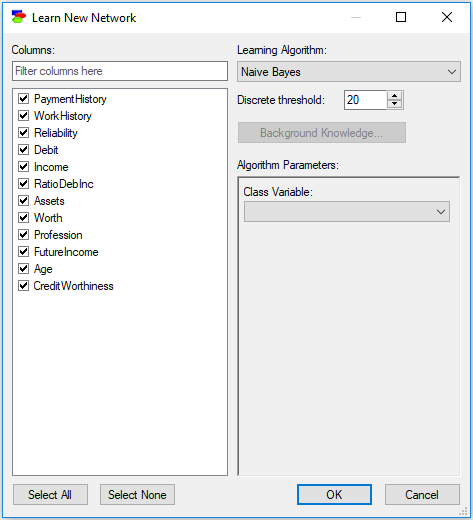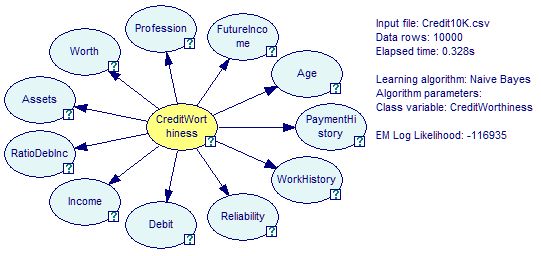The Naive Bayes learning algorithm is a naive structure learning method that is included in the category of structure learning algorithms only because it creates a Bayesian network, including its structure and parameters directly from data. The structure of a Naive Bayes network is not learned but rather fixed by assumption: The class variable is the only parent of all remaining, feature variables and there are no other connections between the nodes of the network. The Naive Bayes structure assumes that the features are independent conditional on the class variable, which may lead to inaccuracies when this assumption is violated. If you believe that this assumption does not hold, please try one of the improvements on the Naive Bayes algorithm, the TAN of the ANB algorithms. The Naive Bayes algorithm is incredibly simple and has been found to perform reasonably well, even for small data sets. Here is the Learn New Network dialog for the Naive Bayes algorithm:

The Naive Bayes algorithm has only one algorithm specific parameter:
•Class Variable, which is a pop-up menu forcing the user to select one of the columns in the data file (variables) as the class variable. This is a crucial choice, as it determines the structure of the graph. Only those variables that are selected in the Columns list appear on the Class Variable pop-up menu.

The algorithm produces an acyclic directed graph with the class variable being the parent of all the other (feature) variables and no other connections between the nodes. In case the Feature Selection option is checked, those nodes that are independent of the class variable are disconnected from it.
